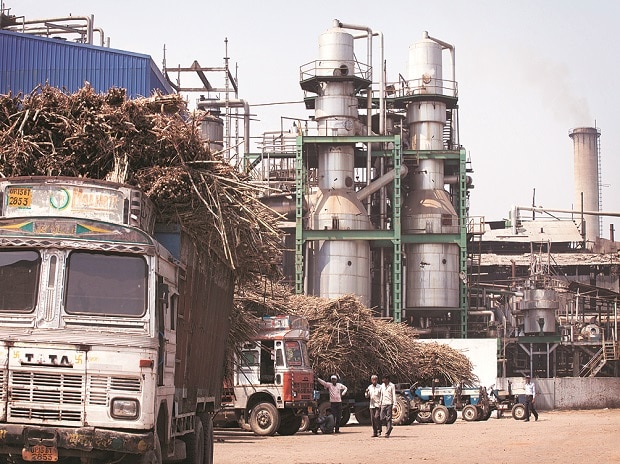The improved cash flow due to a sharp increase in sugar prices has helped mills to reduce their debt and improve profitability in the financial year 2016-17.
While most sugar mills have reduced their debt over the last two years, their borrowings continued to be substantially higher than the net worth thereby disappearing net profit on high-interest cost. This simply indicates that sugar mills would continue to face challenges in debt servicing. A number of sugar mills, including Empee Sugars and Kesar Enterprises, have their negative net worth as per Capitaline data.
Data compiled by Capitaline showed Shree Renuka Sugars (SRSL), India's largest sugar refiner which recently sold its additional stake to Wilmar to reduce its debt burden, carries a total consolidated debt on its book to the tune of Rs 6,012 crore for the financial year 2016-17, a sharp decline from Rs 9,104.1 crore for the previous financial year. With the improvement in its net sales at Rs 1,1844.5 crore for FY17 from Rs 9,823.4 crore in the previous year, SRSL posted a net loss of Rs 1,039.7 crore for FY17 compared to Rs 1,802.9 crore loss for the last financial year. Interestingly, SRSL's total debt is much higher than its negative net worth of Rs 2,652.2 crore for FY17.
"Most sugar mills' balance sheet is heavily loaded with debt. But, a number of them have not only reduced their borrowings but also fund working capital with cash balance thereby, an automatic reduction in debt. With sugar prices have recovered a bit in the past few months, sugar mills' would be able to reduce their debt further in coming quarters," said a senior analyst with a leading equity broking firm.
Companies like Bajaj Hindusthan and Balrampur Chini though reported a profit for FY17, their debt continued to remain higher than the net worth. Kolkata-based Balrampur Chini, however, has reported the highest net profit in the industry at Rs 592.8 crore compared to Rs 92 crore loss incurred by the industry leader Bajaj Hindusthan. Balrampur Chini has lower cane crushing capacity than Bajaj Hindusthan.

Compiled by BS Research Bureau, Source: Capitaline
A Care Rating study showed sugar prices in the domestic market that averaged at Rs 36.20 per kg in the December 2016 quarter increased to Rs 38.2 per kg in January 2017, a growth of 5.5 per cent. In February 2017, the prices rose by 3.9 per cent to Rs 39.7 per kg on an m-o-m basis. The prices however stabilised from the month of February 2017 onwards and they hovered in the range of Rs 38.20-39.90 per kg during the period February-June 2017. In the initial few days of July 2017, the prices averaged at Rs 37 per kg. The prices stabilised as domestic production was sufficient to meet consumption requirements in the country, the study said.
Abinash Verma, director general of the apex industry body Indian Sugar Mills Association (ISMA) said, "The revenue realisation should be good for the next year."
Rating agency Icra estimates sugar mills' margins to come under some pressure from Q3, FY18 onwards due to high stocks of around 4-4.5 million tonnes at the end of the forthcoming sugar season SY2018. Sugar production is likely to be around 24.5 million tonnes in SY2018, up from 20.3 million tonnes in SY2017. However, despite the increase in sugar production, the sugar stocks would at best be at the same level as the estimated consumption too will be around 24.5 million tonnes in SY2018. While this expected tight stock situation, along with the recent increase in the import duty on sugar from 40-50 per cent is likely to support the domestic sugar prices in the near term, the increase in cane costs for the coming crushing season will impact margins.
"The tight sugar stock situation in the domestic market, coupled with the hike in import duty, is likely to support the sugar prices in the near term. But increase in cane prices may result in some moderation in margins from Q3 FY2018 onwards, despite firm sugar prices. Under the emerging scenario, the margins and cash flow generations for most mills with efficient operations, forward integration and adequate cane availability are likely to remain satisfactory," said Sabyasachi Majumdar, senior vice president & group head, ICRA Ratings.
